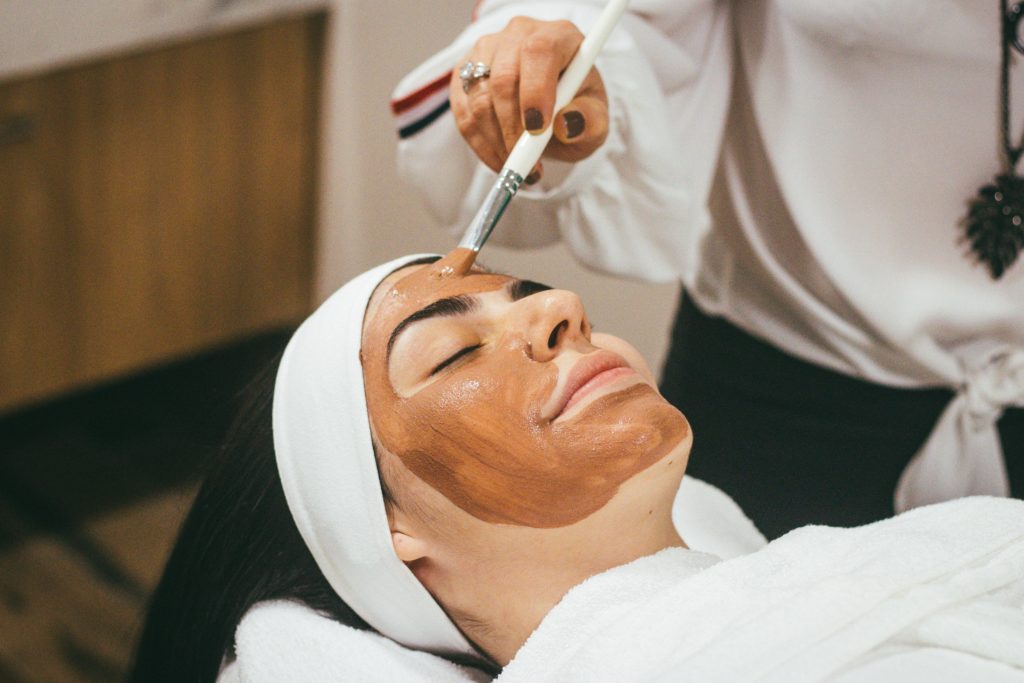In a world where the beauty industry is flooded with countless products and treatments promising the perfect skin, hair, and overall radiance, Ayurvedic practices stand out as a time-tested, holistic approach to enhancing your natural beauty.
Ayurveda, the ancient Indian system of medicine, places great importance on maintaining and enhancing one’s beauty through a combination of lifestyle choices, dietary habits, and the use of natural remedies.
If you’ve ever wondered how Ayurveda can help you achieve and maintain your best self, this comprehensive guide will walk you through the beauty benefits of Ayurvedic practices.
What is Ayurveda?
Ayurveda, often called the “science of life,” is a traditional system of medicine that has its roots in India. It’s a holistic approach to health and wellness that dates back over 5,000 years.
The word “Ayurveda” is derived from two Sanskrit words: “Ayur,” meaning life, and “Veda,” meaning knowledge. Ayurveda provides a framework for living in harmony with the natural world and is based on the principles of balance, wellness, and prevention.
Ayurveda goes beyond mere external beauty; it seeks to achieve inner and outer balance. In this system, beauty is not just skin deep but is a reflection of your overall well-being. Ayurvedic practices focus on achieving a healthy, radiant, and youthful appearance through nurturing your body, mind, and spirit.
Ayurvedic Key Principles
The key principles of Ayurveda include:
- The Three Doshas: Ayurveda identifies three primary doshas, which are unique combinations of the five elements (earth, water, fire, air, and ether) that exist in varying proportions in every individual:
- Vata: Predominantly composed of air and ether elements, associated with dryness, coldness, and mobility.
- Pitta: Comprising fire and a small amount of water, associated with heat, transformation, and intensity.
- Kapha: Mainly consisting of water and earth, linked to stability, moisture, and heaviness.
- Dosha Balance: The concept of dosha balance is central to Ayurveda. Good health and beauty are believed to result from the harmonious balance of these doshas. When the doshas are in equilibrium, they reflect radiant beauty.
- Agni (Digestive Fire): Agni, or digestive fire, plays a crucial role in Ayurveda. It’s responsible for the efficient digestion and absorption of nutrients from food. A strong and balanced agni is essential for both inner and outer beauty.
- Individual Constitution (Prakriti): Each person has a unique constitution or prakriti, determined by the dominant dosha at birth. Understanding your prakriti helps tailor Ayurvedic beauty practices to your specific needs.
- Vikriti (Current Imbalance): Ayurveda also considers your current dosha imbalance or vikriti, which may be different from your prakriti. Balancing the doshas according to your vikriti is essential for beauty and overall health.
- Holistic Approach: Ayurveda takes a holistic approach to beauty, emphasizing the interconnection of physical, mental, and emotional well-being. External beauty is a reflection of inner health and harmony.
- Natural Remedies: Ayurveda relies on natural ingredients, such as herbs, oils, and minerals, to promote beauty. These remedies are chosen based on their qualities and effects on the doshas.
- Prevention Over Cure: Ayurveda encourages preventive practices to maintain balance and beauty rather than solely relying on treatment after imbalances or beauty issues arise.
Ayurvedic Beauty Practices
1. Abhyanga (Oil Massage)
A traditional Ayurvedic full-body massage using herbal oils designed to nourish the skin, improve circulation, and promote relaxation. It helps in detoxification, toning the muscles, and enhancing the complexion. Different oils are used based on the individual’s dosha for maximum benefits.
2. Ubtan (Herbal Scrubs)
Ubtan refers to an herbal paste or powder used as a natural exfoliant and skin rejuvenator. It typically includes ingredients like turmeric, sandalwood, chickpea flour, and various herbs. Ubtan helps remove dead skin cells, promoting blood circulation, and enhancing the skin’s natural radiance.
3. Ayurvedic Diet and Nutrition
Ayurveda emphasizes the role of diet in maintaining beauty. Consuming a diet based on the principles of Ayurveda, including fresh fruits, vegetables, whole grains, and specific spices, helps balance the doshas and supports healthy, glowing skin. Sattvic foods, known for their purity and positive impact on the mind and body, are often recommended for achieving a natural, healthy glow.
4. Herbal Remedies and Face Packs
Ayurveda utilizes a wide range of herbs and natural ingredients for preparing face packs and masks tailored to specific skin types and beauty needs.
Ingredients like turmeric, neem, aloe vera, sandalwood, and rose water are commonly used for their cleansing, moisturizing, and rejuvenating properties.
10 Beauty Benefits of Ayurvedic Practices
1. Glowing Skin
In Ayurveda, achieving glowing skin starts with balancing your doshas, the fundamental energies in the body. When the doshas are in harmony, your skin radiates health and beauty. Ayurvedic skincare also emphasizes the use of natural ingredients that nourish the skin and protect it from external stressors.
2. Healthy Hair
Ayurvedic practices for hair care focus on maintaining a healthy scalp, as it’s considered the foundation of lustrous hair. Herbal remedies, oil massages, and dietary recommendations play a key role in promoting strong and beautiful hair.
3. Radiant Complexion
Your complexion is a reflection of your diet and lifestyle in Ayurveda. By following Ayurvedic dietary guidelines and using skin-rejuvenating herbs, you can attain a radiant and glowing complexion.
4. Strong Nails
Ayurveda offers insights into maintaining strong and beautiful nails through specific practices and dietary adjustments. Healthy nails are a sign of overall well-being.
5. Improved Digestion
In Ayurveda, good digestion is essential for beautiful skin. We’ll explore the connection between digestion and skin health and share Ayurvedic herbs and practices that support better digestion.
6. Stress Reduction
Stress can take a toll on your beauty. Ayurveda provides effective stress management techniques that not only promote relaxation but also enhance your overall appearance.
7. Weight Management
Ayurvedic principles of weight management focus on achieving a healthy weight through natural remedies, dietary choices, and balanced lifestyle practices.
8. Anti-Aging Effects
Ayurveda approaches aging with grace and natural remedies. Discover how Ayurvedic practices can help you maintain a youthful appearance without resorting to chemical-laden products.
9. Acne and Blemish Control
Ayurveda delves into the root causes of acne and blemishes and offers effective natural solutions to achieve clear and healthy skin.
10. Inner Radiance
Ayurveda emphasizes the connection between inner and outer beauty. A balanced mind and spirit are vital for achieving true radiance. Learn how to achieve this balance through Ayurvedic practices.
Conclusion
Ayurveda offers a treasure trove of beauty benefits that extend far beyond the surface. By embracing the wisdom of Ayurvedic practices, you can achieve glowing skin, lustrous hair, and overall well-being. This holistic approach to beauty taps into the deep connection between inner balance and external radiance, providing timeless secrets to enhancing your natural beauty.
Frequently Asked Questions
1. What does Ayurveda say about beauty?
Ayurveda views beauty as a reflection of inner balance and health. It emphasizes that true beauty comes from harmonizing the doshas, maintaining a healthy mind and body, and embracing natural ingredients and practices.
2. What does Ayurveda say about glowing skin?
Ayurveda believes that glowing skin is a result of balanced doshas and proper skincare routines. It recommends natural ingredients like turmeric and aloe vera for radiant skin.
3. How to get glowing skin as per Ayurveda?
To achieve glowing skin according to Ayurveda, focus on balancing your doshas, following a skincare routine using natural ingredients, and consuming a diet that suits your constitution.
4. What are the three pillars of beauty in Ayurveda?
The three pillars of beauty in Ayurveda are Dinacharya (daily routines), Ahara (dietary guidelines), and Herbal Remedies. These practices collectively contribute to holistic beauty.
5. What are the 5 spiritual elements of Ayurveda?
Ayurveda is based on the concept of the five elements: Earth, Water, Fire, Air, and Space (or Ether). These elements form the basis of Ayurvedic principles and help define one’s constitution or prakriti.
6. What are the 5 principles of Ayurveda?
The five principles of Ayurveda are the five elements (Earth, Water, Fire, Air, and Space), the three doshas (Vata, Pitta, and Kapha), the concept of Agni (digestive fire), the concept of Ojas (vitality), and the understanding of Ama (toxins).
7. What is the golden rule of Ayurveda?
The golden rule of Ayurveda is to maintain balance in all aspects of life, including diet, lifestyle, and mental well-being. Balance is the key to overall health and beauty.
8. What are the stages of Ayurveda?
Ayurveda recognizes the stages of health (Swasthya), transition (Samsarga), and disease (Vyadhi). The goal is to remain in the stage of health and prevent or manage disease effectively.
9. What are the 4 basics of Ayurveda?
The four basics of Ayurveda are the doshas (Vata, Pitta, Kapha), the concept of Agni (digestive fire), the understanding of Ama (toxins), and the concept of Ojas (vitality).
10. How to start practicing Ayurveda?
To start practicing Ayurveda, you can begin by understanding your dosha type, adopting daily routines, following dietary guidelines, and exploring herbal remedies. Consulting an Ayurvedic professional can provide personalized guidance.
11. What are the 8 methods of Ayurveda?
The eight methods of Ayurveda, also known as Ashtanga Ayurveda, include diagnosis (Nidana), purification (Shodhana), palliation (Shamana), dietary guidelines (Ahara), behavior and lifestyle guidelines (Vihara), drug therapy (Ausadh), rejuvenation (Rasayana), and surgery (Shalya Chikitsa). These methods are used to promote health and treat various conditions.



